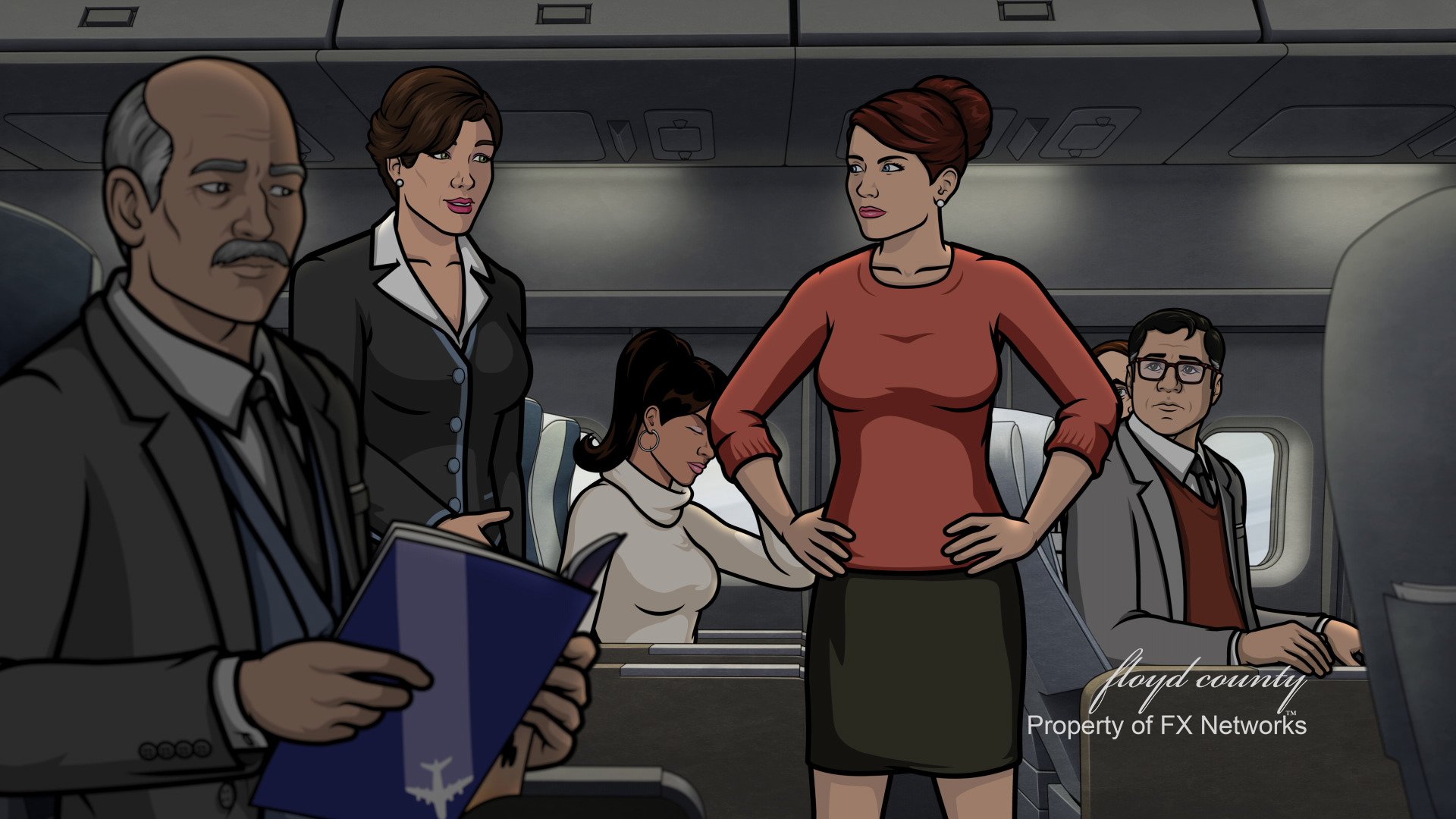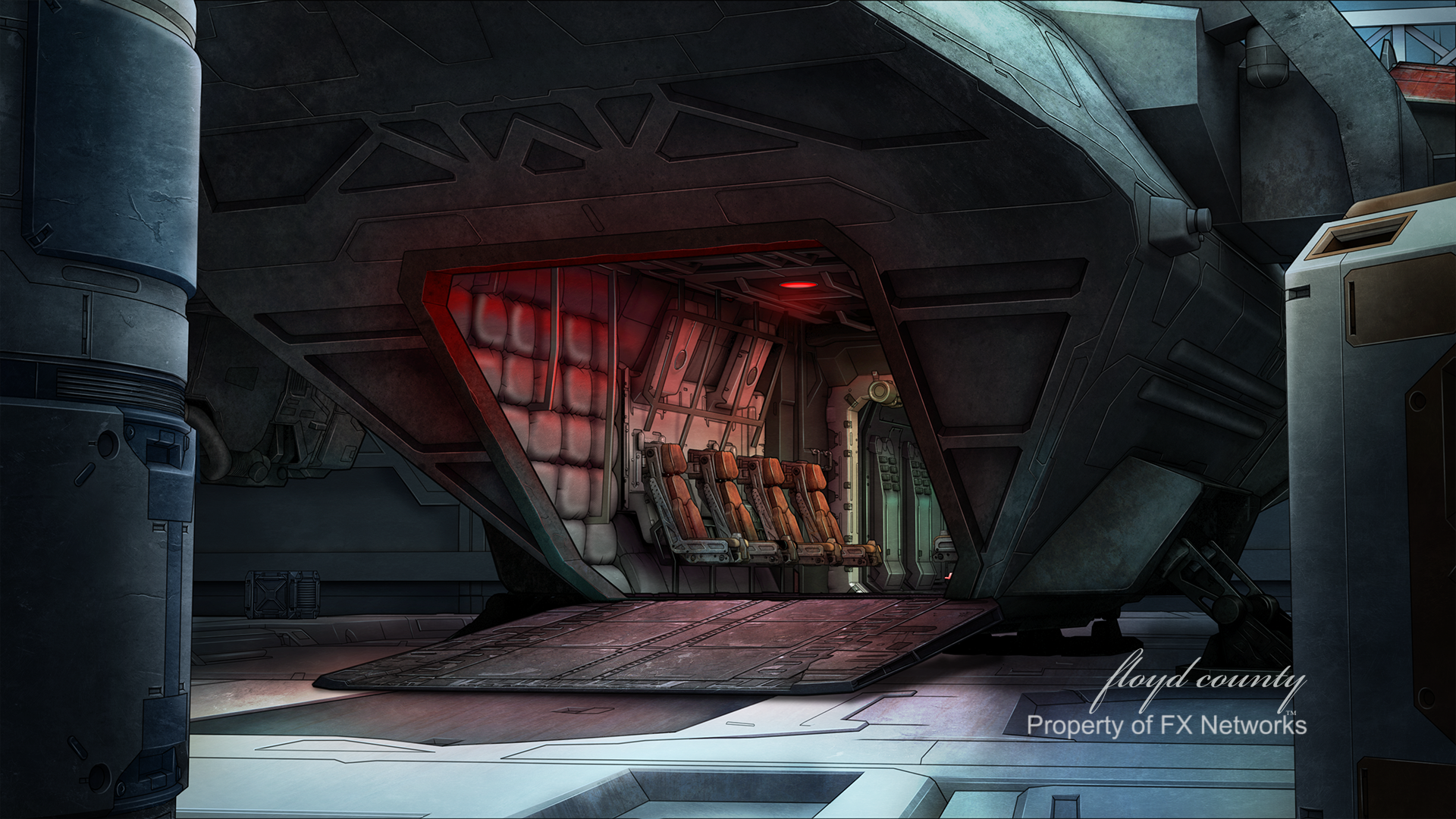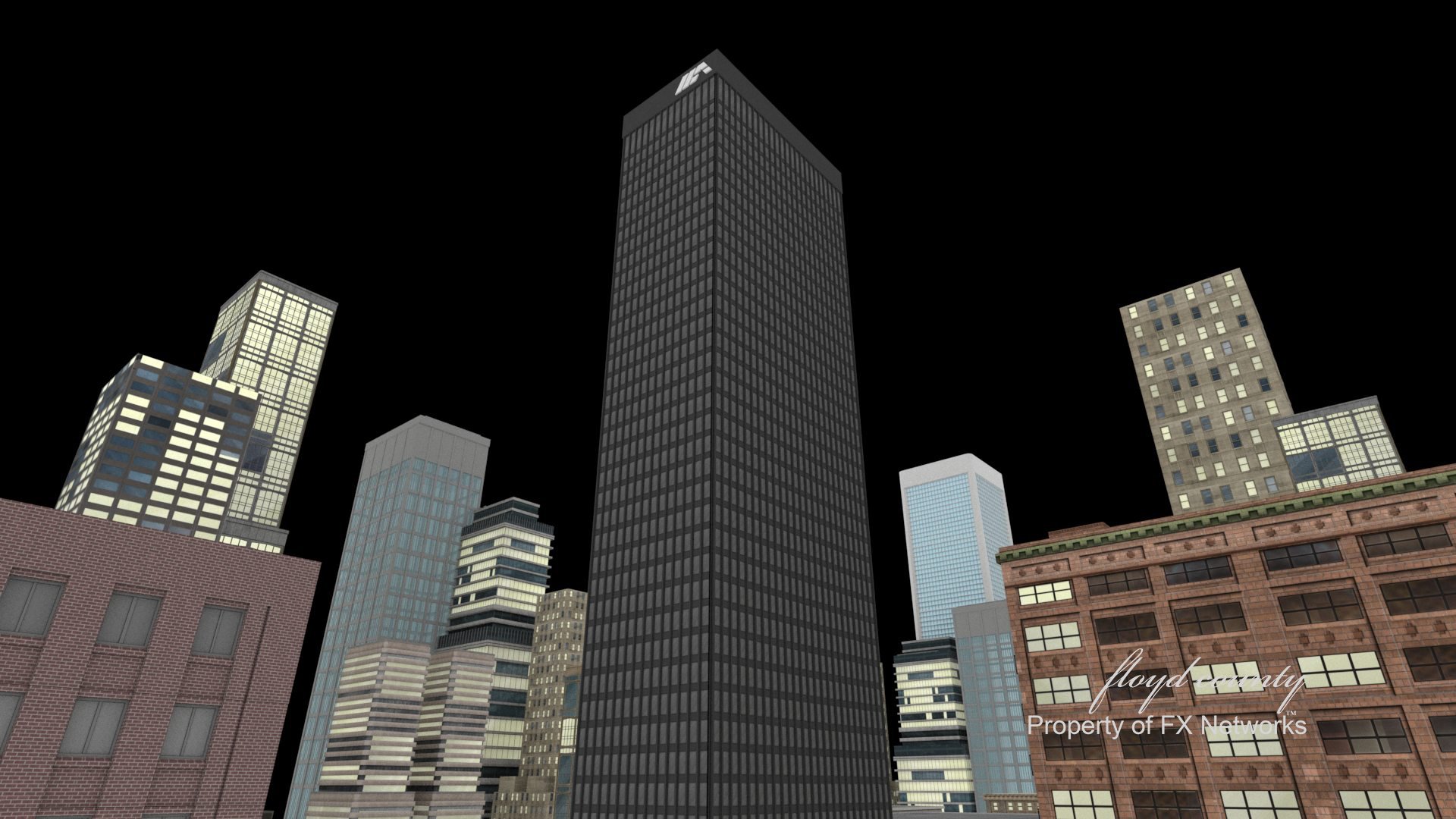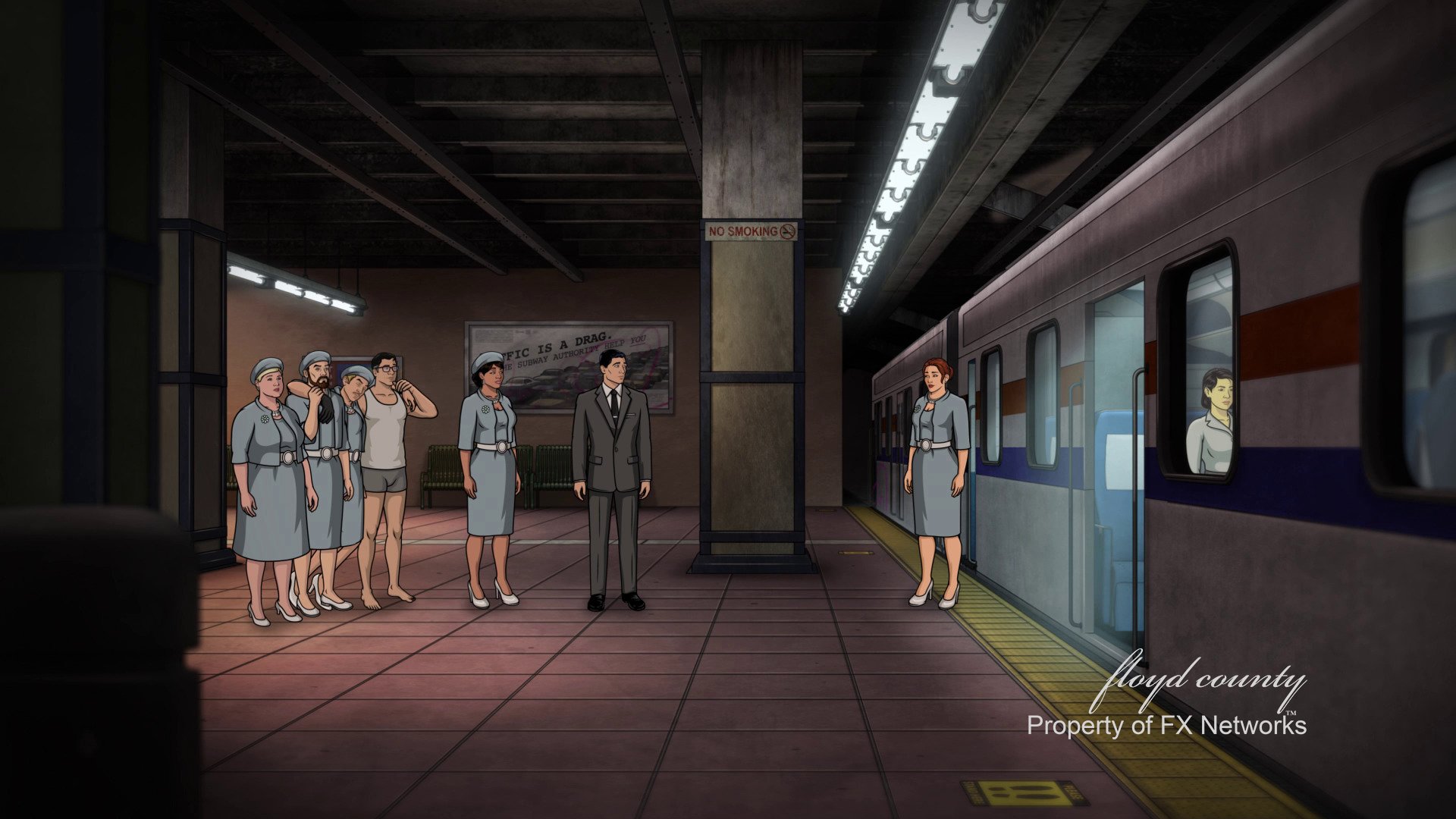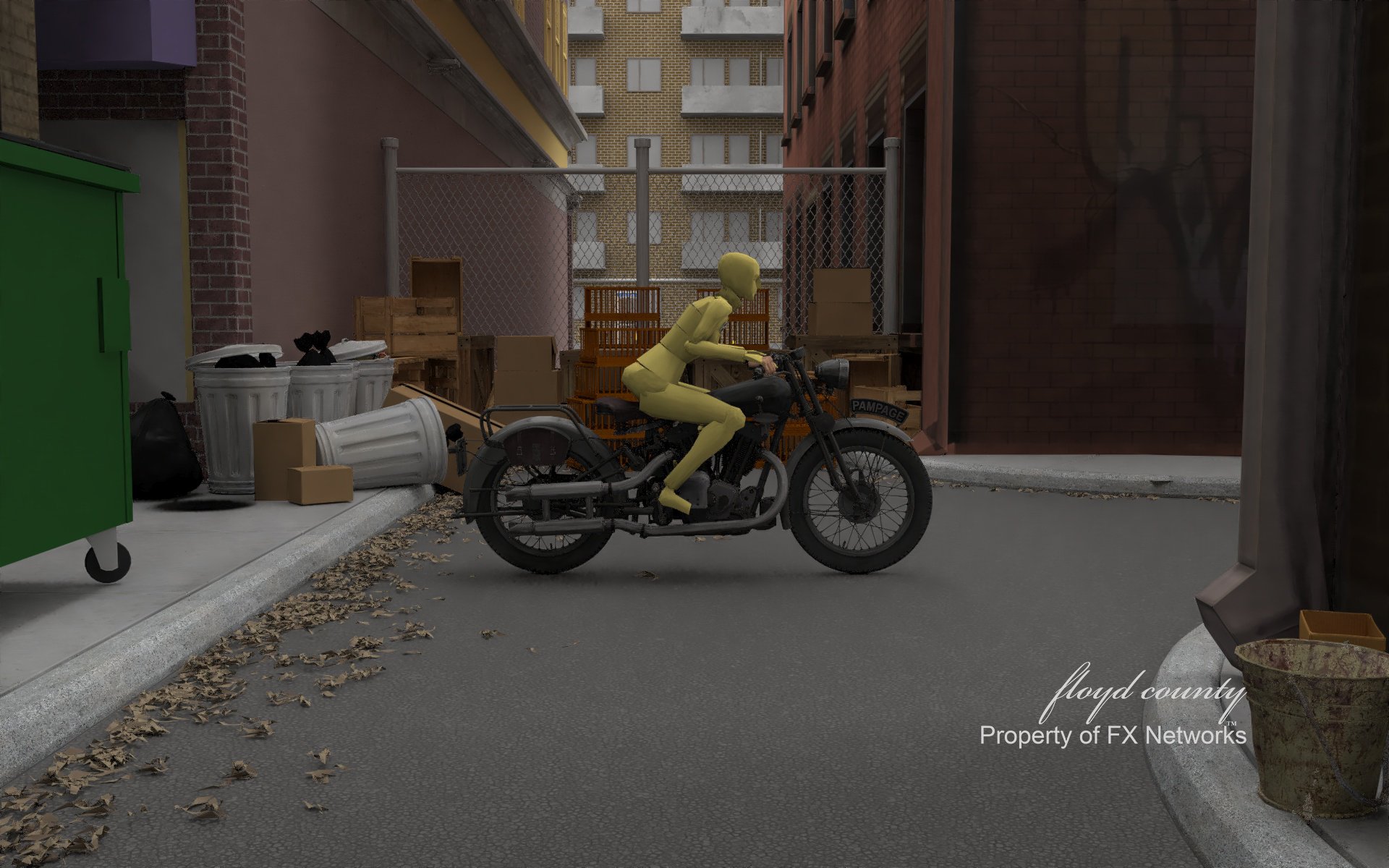Archer is a sitcom that aired for 14 seasons on FX. I started as a 3D Environment Artist in season 10 where I was primarily responsible for modeling sets. I went on to be the lead of the 3D layouts sub department in the 13th and 14th seasons, with my primary focuses being setting camera angles and set dressing to compose interesting shots. During my time working on this production I completed a wide variety of tasks, including:
Modeled 3D environments and 3D animated assets
Set dressed and established lighting within 3D environments
Staged shots and set camera angles to match provided storyboards
Created first pass of 3D animations for vehicles and cameras
Created renders in the form of organized and layered PSDs
Established and documented standards and practices
Trained other members of the 3D department to assist with 3D layouts
2D Backgrounds
Backgrounds in the Archer pipeline start out as 3D renders. Using this approach allows our team to easily set up multiple camera angles within an environment while keeping layout and proportions consistent between shots. Drawing accurate perspective can be time consuming for the backgrounds department, so splitting the workload is this way enables them to focus on adding detail.
3D Animation
Archer utilizes 3D animation for a number of shots. Typically the 3D animation consists of vehicles and moving backgrounds, but sometimes we make something a little outside the box. This the example I created a courtroom animation designed to parody the low quality of many animations in the genre. It certainly isn’t the most technically advanced shot I’ve ever worked on, but it was perhaps one of the most fun ones and offered a lot of opportunities for creativity.
3D Layouts
For a portion of my time working on Archer my primary focus was 3D Layouts. In this role I was responsible for set dressing and establishing camera angles for each shot. Setting up large quantities of shots like this required a strong grasp of shot composition, and an intuition to anticipate the needs and wants of the art directors for each shot.














